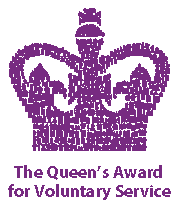Which season is best for this activity?
This activity can be done all year round. The session is held mostly outdoors; suitable clothing is required if rain is forecast.
Learning objectives and links to the National Curriculum of Study
The session links directly to the National Curriculum History Programmes of Study for Key 2. All our sessions are underpinned by detailed lesson plans. These plans are adjusted to take account of the variations in ability and skill level.
Pupils should be taught about:
- A local history study (KS2)
- A study of an aspect of history that is significant to the locality (KS2)
Outline of the activity
We will begin with an introductory discussion. This will involve a brainstorming and Q&A session to find out what the children already know about WW2. Using contemporary aerial photographs, we will set the scene for Richmond Park during WW2. We will focus on topics such as the home front and operations within the park itself such as the production of food and various government activities. The children will then be split into three groups and will cover the following activities:
- Code cracking on the nature trail: We will discuss the part the park played in local and national defence. The children will learn about the phantom squad, a secret government squad based in the park, and will move around the nature trail deciphering codes in an attempt to open a mystery box.
- Food growing in the kitchen garden: We will explain how after WW1 the government anticipated food shortages and introduced food rationing very quickly after the outbreak of war. To supplement rations people were encouraged to grow their own food. In Richmond Park, parkland was turned into farmland where oats, potatoes, wheat and beans were grown, and allotments where people grew fruits and vegetables to supplement their diets. The children will explore a weekly ration basket; follow instructions to plant a pea seed in a paper potter; will dig up some potatoes and feed the pig bin.
- ARP in the picnic garden: We will learn how else the park supported the war effort by aiding convalescence and training the military, the home guard and with air raid precautions. We will look at aerial photograph and bomb maps to understand how vulnerable we were so close to London. The children will make their own identify cards to keep themselves safe and take part in a drill and inspection. They will then work as a team to put out an incendiary bomb safely.
Ideas for pre-visit learning
Before bringing a group to do this activity, here are some ideas to help to introduce the subject:
- Look at pictures and learn about the technologies used in WW2 (on land and in the air).
- Look at the Home front and how day to day life was affected for children and families living in London during the war.
- Ask the children to think about the roles of people who were not actively fighting in the war – how could they help in the war effort?
Ideas for follow-up work back at school
- Can the children create their own codes? – creating and deciphering.
- Choose one of the activities and write a report about it.
- Look online at the aerial maps of the park – can they recall what they learnt at the centre and recognise activities on the maps themselves?
- Research other jobs women had during the war.
- Stage a debate as to how instrumental the park was to the war effort.
Very hands-on! Brought classroom learning to life. Knowledgeable staff, engaging and age-appropriate activities, exciting, inclusive towards all learners, reinforced our learning as well as introducing new learning.


